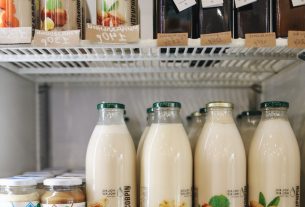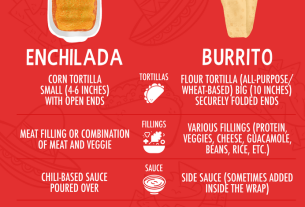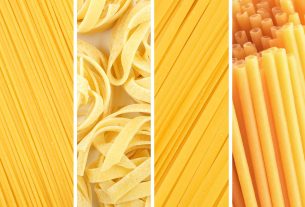Step into the world of sheep, lambs, and goats, where the line between these fascinating creatures blurs.
From their luxurious wool to their succulent meat, these tranquil animals have played a crucial role in human history.
Delicacies in the Middle East, they showcase a kaleidoscope of colors, flavors, and textures.
Delve into this captivating exploration and unravel the timeless bond between humans and these remarkable beings.
sheep vs lamb vs goat
Sheep, lambs, and goats are all members of the Bovidae family and the subfamily Caprinae.
They belong to different genera, with sheep being from the genus Ovis and goats from the genus Capra.
Each of these animals has distinct characteristics and uses.
Sheep are generally known for their wool, which is used in various industries, including textiles.
They are also raised for their meat, referred to as mutton when the animals are older or hogget when younger.
Sheep meat is a red meat and is considered a delicacy in some parts of the world, particularly in the Middle East.
It is a good source of iron and potassium.
Goats are also raised for their meat, which has a range of colors depending on the breed.
Goat meat is referred to as chevon or capretto and is commonly consumed in many cultures.
Additionally, goat skin is utilized for leather production.
It is known for its durability and is used to make products such as shoes and bags.
Lambs are young sheep that have not reached sexual maturity.
Their meat, commonly called lamb, is highly valued for its tenderness and mild flavor.
It is often described as sweeter than goat meat.
Lamb meat can be further distinguished by its marbling of fat, which contributes to its flavor and tenderness.
Although all three animals have similarities, such as being a source of red meat and providing insulation, they have distinct characteristics.
Sheep are primarily associated with wool production, goats are known for their varying meat colors and for providing goatskin, and lambs are celebrated for their tender and flavorful meat.
These animals have played significant roles in human history, providing valuable resources and sustenance.
Key Points:
- Sheep, lambs, and goats are all part of the Bovidae family and Caprinae subfamily.
- Sheep are known for their wool, which is used in textiles, and are raised for meat.
- Goat meat, referred to as chevon or capretto, is consumed in many cultures, and goat skin is used for leather production.
- Lambs are young sheep and their meat, called lamb, is valued for its tenderness and mild flavor.
- Sheep primarily contribute to wool production, goats are known for their meat and goatskin, and lambs are celebrated for their flavorful meat.
- These animals have played significant roles in human history, providing resources and sustenance.
sheep vs lamb vs goat – Watch Video


Pro Tips:
1. In terms of taste, lamb meat is known for its mild and tender flavor, while mutton (meat from adult sheep) has a stronger and more distinct taste.
2. Sheep have an outstanding ability to recognize and remember human faces. They can remember and distinguish between different individuals for up to two years!
3. A small percentage of sheep, around 1 in 1000, are naturally born with four horns instead of the usual two. This genetic anomaly is known as “polycerate.”
4. Lambs are born with tails naturally, but in some countries, tail docking (the removal of part or all of the tail) is commonly practiced to reduce the risk of disease and improve hygiene.
5. Goats have rectangular pupils which are thought to give them a wider field of vision and enhanced depth perception. This adaptation helps them navigate mountainous terrains with ease.
Sheep
Sheep are domesticated herbivorous mammals belonging to the genus Ovis, which includes several species such as Ovis aries or the common sheep. They have been bred for thousands of years for their wool, meat, and milk. Sheep are recognized for their thick, warm coats of wool that provide insulation during cold weather. This natural fiber has been an essential resource for human civilizations, supplying material for clothing, textiles, and even insulation for buildings.
In addition to their wool, sheep are also valued for their meat. Lamb, which is the meat of young sheep, is highly regarded for its tenderness and mild taste. As sheep mature, their meat becomes known as hogget or mutton. These cuts offer a richer flavor and texture compared to lamb.
Throughout history, sheep have played a significant role in human society. Their wool and meat have sustained countless cultures, and their presence in various mythologies and religions highlights their cultural importance. In regions like the Middle East, sheep have been considered a delicacy, often prepared in traditional dishes that showcase their unique flavors.
Lambs
Lambs are the young offspring of sheep. They are characterized by their tender, lean meat and delicate texture. Due to their youth, lambs produce a milder flavor compared to older sheep. As a result, lamb meat is highly sought after in gourmet cuisine and is often associated with high-end restaurants.
The consumption of lamb has a long-standing history in various parts of the world. In the Middle East, for example, lamb dishes are an integral part of the culinary traditions. The unique flavors and textures of lamb have made it a central ingredient in many traditional Middle Eastern recipes, adding richness and depth to stews, roasts, and kebabs.
Furthermore, lamb meat is known for its nutritional value. It is an excellent source of heme iron, which is more easily absorbed by the body than non-heme iron found in plant-based foods. Lamb also contains essential minerals such as potassium, which plays a crucial role in maintaining overall health and proper muscle function. These nutritional benefits, combined with its delicate flavor, make lamb a popular choice in many cuisines around the world.
Goats
Goats, members of the genus Capra, are hardy and versatile animals known for their adaptability to diverse climates and terrains. They are often found in mountainous regions, where their agility allows them to navigate steep slopes and rocky terrain with ease.
Goats are highly valued not only for their milk and meat but also for their hides. Goat leather, known as goatskin, is renowned for its durability, softness, and distinctive grain pattern. It is commonly used in the production of high-quality products such as shoes, bags, and gloves. The leather is prized for its ability to age gracefully and develop a unique patina over time, making it a popular choice for individuals who appreciate the beauty of naturally aged materials.
When it comes to their meat, goats offer a range of flavors and textures. Young goat meat, also known as kid meat, is mild and tender, similar to lamb. As goats age, their meat develops a gamier flavor, comparable to venison or beef. This variety of flavors allows for culinary creativity, as different cuts and cooking methods can be employed to highlight the unique characteristics of the meat.
Furthermore, goat meat is known for its nutritional qualities. It is low in cholesterol and saturated fats, making it a healthier alternative to red meats such as beef or lamb. Additionally, goat meat is a good source of iron, which is essential for proper oxygen transport and energy production in the body.
- Goats are hardy and versatile animals.
- Goat leather is durable, soft, and has a distinctive grain pattern.
- Goat meat offers a range of flavors, from mild and tender to gamier.
- Goat meat is low in cholesterol and saturated fats, making it a healthier alternative.
- Goat meat is a good source of iron.
“Goats, members of the genus Capra, are hardy and versatile animals known for their adaptability to diverse climates and terrains.”
Animal Family Bovidae
The sheep, lamb, and goat all belong to the animal family Bovidae, which is a diverse group of cloven-hoofed mammals that includes cattle, antelopes, and gazelles. Bovids are characterized by their four-chambered stomachs and unique digestive systems that allow them to efficiently extract nutrients from plant matter.
Within the Bovidae family, sheep and goats belong to the subfamily Caprinae, which encompasses about 30 different species. This subfamily is known for its varied habitats, including mountainous regions, grasslands, and deserts. Caprinae species have adapted to these environments, often developing specialized characteristics such as hollow hair for insulation in cold climates or large ears for heat dissipation in arid regions.
- Bovidae family is a diverse group of cloven-hoofed mammals.
- Bovids have four-chambered stomachs and efficient digestive systems.
- Sheep and goats are part of the Caprinae subfamily within the Bovidae family.
- Caprinae species inhabit mountainous regions, grasslands, and deserts.
- Sheep and goats have specialized characteristics for their respective habitats.
“The sheep, lamb, and goat all belong to the animal family Bovidae, which is a diverse group of cloven-hoofed mammals that includes cattle, antelopes, and gazelles.”
– Quote
Genus Capra
The genus Capra within the subfamily Caprinae includes several species of wild goats, such as the wild goat (Capra aegagrus) and the Ibex (Capra ibex). These species have been domesticated and bred selectively for different purposes, leading to the creation of various goat breeds worldwide.
Domestic goats are highly versatile animals, providing milk, meat, and fiber for human consumption and use.
Goats are known for their adaptability nature, as they can thrive in a wide range of climates and terrains. They are often found in diverse regions, from mountainous areas to dry and arid lands.
This adaptability has made goats a valuable resource for many communities worldwide, especially in areas where farming options are limited.
Genus Ovis
The genus Ovis encompasses several species of sheep, including the domestic sheep (Ovis aries) and the wild sheep (Ovis orientalis). The domestication of sheep dates back thousands of years and has had a significant impact on human civilization. Sheep have been selectively bred for their wool, which has provided warmth, protection, and material for various textiles throughout history.
Sheep are also highly-valued for their meat, which includes both lamb and mutton. The meat of sheep is considered red meat, similar to beef and pork, and provides a rich source of protein and nutrients. Different cuts and cooking methods can result in a wide range of flavors, making sheep meat a versatile ingredient in many culinary traditions.
- The genus Ovis includes domestic sheep (Ovis aries) and wild sheep (Ovis orientalis).
- Sheep have been selectively bred for their wool, which has been used for textiles.
- Sheep meat, including lamb and mutton, is considered red meat.
- Sheep meat is a rich source of protein and nutrients.
- Different cuts and cooking methods result in a variety of flavors.
“Sheep have had a significant impact on human civilization, providing warmth, protection, and material for textiles throughout history.”
Mouflons
Mouflons are a species of wild sheep commonly found in mountainous regions of Europe and Asia. They are considered the ancestors of domestic sheep and have distinctive characteristics such as a compact build, curved horns, and a thick coat of fur. Mouflons have played a significant role in the evolution of domestic sheep breeds through selective breeding and crossbreeding.
While wild mouflons are primarily hunted for sport or conservation purposes, domesticated mouflon breeds have been developed for their wool, meat, or both. These breeds often retain some of the rugged qualities of their wild ancestors, making them well-suited for harsh environments or extensive grazing systems.
- Mouflons are a species of wild sheep commonly found in mountainous regions of Europe and Asia.
- They are considered the ancestors of domestic sheep and have distinctive characteristics such as a compact build, curved horns, and a thick coat of fur.
- Mouflons have played a significant role in the evolution of domestic sheep breeds through selective breeding and crossbreeding.
- While wild mouflons are primarily hunted for sport or conservation purposes, domesticated mouflon breeds have been developed for their wool, meat, or both.
- These breeds often retain some of the rugged qualities of their wild ancestors, making them well-suited for harsh environments or extensive grazing systems.
Wool
Wool is the defining feature of sheep and sets them apart from other species. It is a thick, crimped, and resilient hair that grows from their skin. This natural insulator provides warmth in colder seasons while also wicking away moisture from the body.
The production of wool has been an essential industry for centuries, supplying materials for textiles, clothing, and various applications. The quality of wool varies based on the breed of sheep. Some breeds produce finer and softer fibers, perfect for delicate garments, while others offer more durable wool suitable for rugs and upholstery.
Regular shearing is necessary to prevent the fleece from becoming too heavy on the sheep, ensuring their comfort. Shearing not only serves the purpose of wool production but also promotes the overall health and well-being of the sheep by preventing heat stress and maintaining hygiene.
Leather
In addition to wool, both sheep and goats offer hides that can be used for leather production. Sheepskin and goatskin are highly valued for their unique qualities and are used in various industries, including fashion, upholstery, and luxury goods.
Sheepskin is known for its exceptional softness, flexibility, and natural insulation properties. It is often used to make warm and comfortable clothing items such as jackets, coats, and boots. Sheepskin rugs and upholstery add a luxurious touch to interior decor, providing both comfort and style.
Goatskin, on the other hand, is appreciated for its durability and natural grain pattern. It is commonly used to create high-quality accessories, such as gloves, shoes, and bags. Goatskin offers a balance between strength and flexibility, making it suitable for products that require both durability and comfort.
The production of sheepskin and goatskin involves a careful process of tanning and finishing to ensure the highest quality results. Skilled artisans and designers recognize the value of these natural materials and appreciate their unique characteristics in the creation of timeless products.
- Sheepskin:
- Exceptional softness, flexibility, and natural insulation properties.
- Used in jackets, coats, boots, rugs, and upholstery.
- Goatskin:
- Known for durability and natural grain pattern.
- Commonly used in gloves, shoes, and bags.
- Tanning and finishing process ensures high-quality results.
Conclusion
Sheep, lambs, and goats are distinct creatures, each offering unique contributions to human society and culture. Understanding their differences, from their genetic classifications and physical characteristics to the qualities of their meat, wool, and hides, enhances our appreciation of these fascinating animals and the valuable resources they provide. Whether it is in the form of warm woolen garments, nutritious meat dishes, or luxurious leather products, the contributions of sheep, lambs, and goats continue to enrich our lives.

You may need to know these questions about sheep vs lamb vs goat
Is a lamb a sheep or goat?
A lamb is a baby sheep, not a goat. Baby sheep, or lambs, are born from ewes and can appear in single or twin births, with occasional triplets. On the other hand, baby goats are called kids and come from female goats. Though both sheep and goats are small ruminants and have similar appearances, their offspring have distinctive names, making a lamb a sheep and a kid a goat.
Are sheep and lamb the same?
Yes, there is a distinction between sheep and lambs. The term “lamb” specifically refers to the young offspring of a sheep, typically up to one year old. Once a lamb reaches one year of age, it is considered a fully-grown adult sheep. Additionally, female adult sheep are called ewes, and male adult sheep are referred to as rams. So, while lambs and sheep are connected, they are not the same and represent different stages of sheep’s life.
Are goats and sheep the same?
Although there are some similarities between goats and sheep, they are in fact different species and genus, each with its own distinct characteristics and genetic makeup. Sheep, scientifically classified as Ovis aries, have 54 chromosomes, while goats, scientifically known as Capra aegagrus hircus, have 60 chromosomes. While these animals may occasionally mate, the occurrence of fertile sheep-goat hybrids is quite rare due to their divergent genetics.
What is goat meat called in USA?
In the United States, goat meat goes by the names cabrito or chevon. The term cabrito refers to meat obtained from kids that are harvested within the first week of their birth, while the term chevon is used for meat from older kids. These distinctive names signify the age of the goat and help differentiate between the two types of meat in the American market. While cabrito captures the tenderness of young goat meat, chevon reflects the slightly firmer texture and flavor of meat from older kids.
Reference source
https://a-z-animals.com/blog/lamb-vs-goat/
https://www.oddsfarm.co.uk/wp-content/uploads/2017/02/EYFS-Lifecycles.pdf
https://www.wikihow.com/Lamb-vs-Sheep
https://www.sheep101.info/sheepandgoats.html



